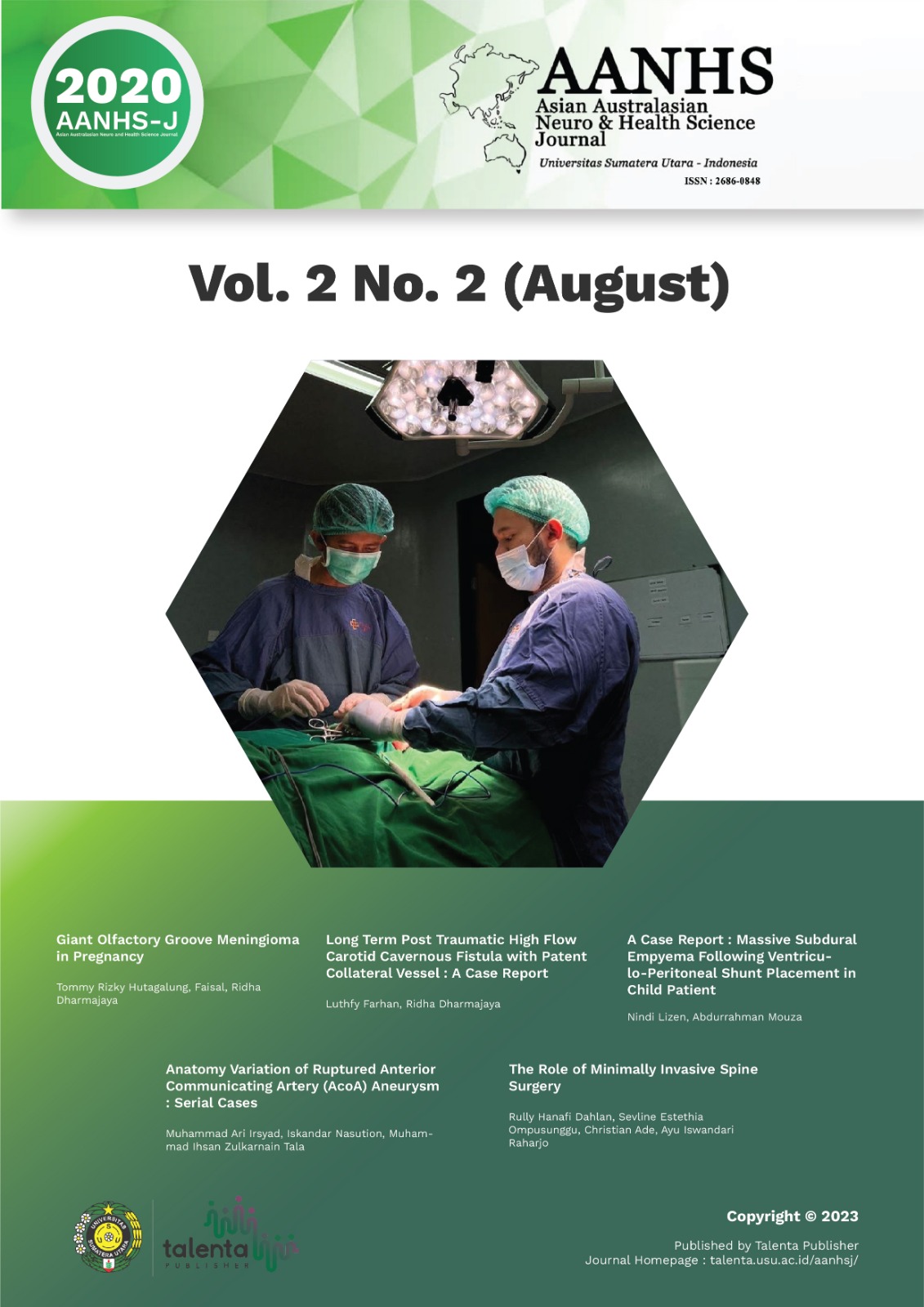A Case Report : Massive Subdural Empyema Following Ventriculo-Peritoneal Shunt Placement in Child Patient
DOI:
https://doi.org/10.32734/aanhsj.v2i2.4337Abstract
Background: Subdural empyema is a critical neurosurgical condition that arise from neurosurgical procedures, trauma, meningitis, sinusitis, or otogenic infection. Reported mortality rates vary from 4.4% to 24%. Ventriculoperitoneal (VP) shunt placement is one of the most common procedures and reported rates for shunt infections are relatively high. However, their association with subdural empyema is rare.
Case Report: One years old boy who presented with fever, lethargy, and inability to walk was admitted to the hospital. He was undergone Vp-shunt 1 month ago because of hydrocephalus. At the time of admission, the child was alert, had a moderate right hemiparesis, and a macrocephalic appearance. An emergency CT scan showed well-circumscribed subdural empyema.
Discussion: A craniotomy was performed, then thick fibrous capsule underlying the dura mater was encountered, finally the pus was totally removed. Postoperatively, he was fully alert with a marked motoric improvement. Diplococus gram positive was found. The patient was given appropriate antibiotic treatment for 3 weeks periode.
Conclusion: Subdural empyema is an unusual complication of a VP-shunt. Although rare in children, it is still a neurosurgical problem. The combination of medication and surgery treatment in Subdural empyema resulted in a good response.
Downloads
Downloads
Published
How to Cite
Issue
Section
License
Copyright (c) 2020 Asian Australasian Neuro and Health Science Journal (AANHS-J)

This work is licensed under a Creative Commons Attribution-NonCommercial-NoDerivatives 4.0 International License.
The Authors submitting a manuscript do understand that if the manuscript was accepted for publication, the copyright of the article shall be assigned to AANHS Journal.
The copyright encompasses exclusive rights to reproduce and deliver the article in all forms and media. The reproduction of any part of this journal, its storage in databases and its transmission by any form or media will be allowed only with a written permission from Asian Australasian Neuro and Health Science Journal (AANHSJ).
The Copyright Transfer Form can be downloaded here.
The Copyright form should be signed originally and sent to the Editorial Office in the form of original mail or scanned document.














